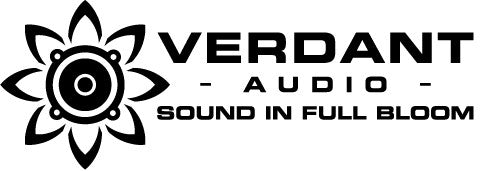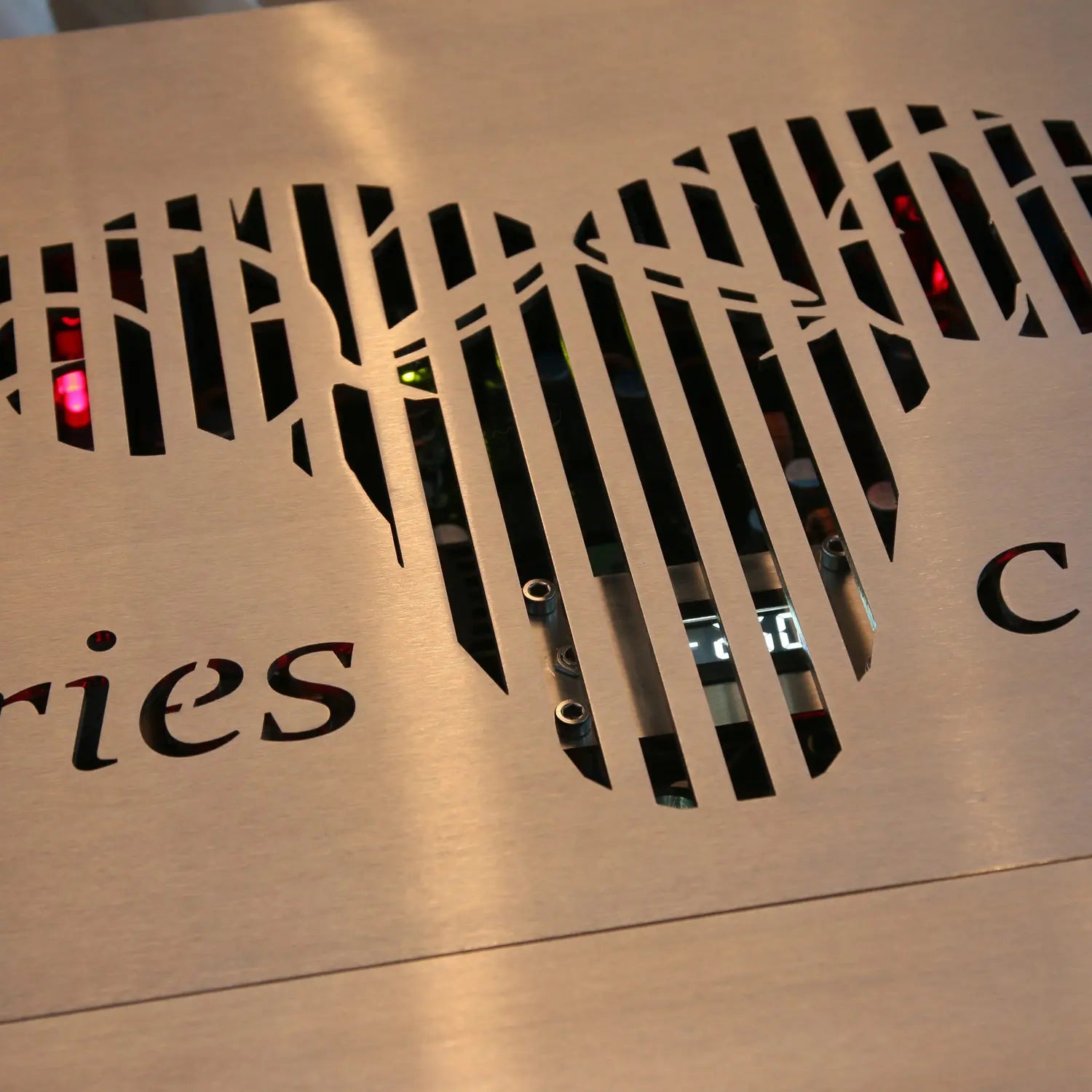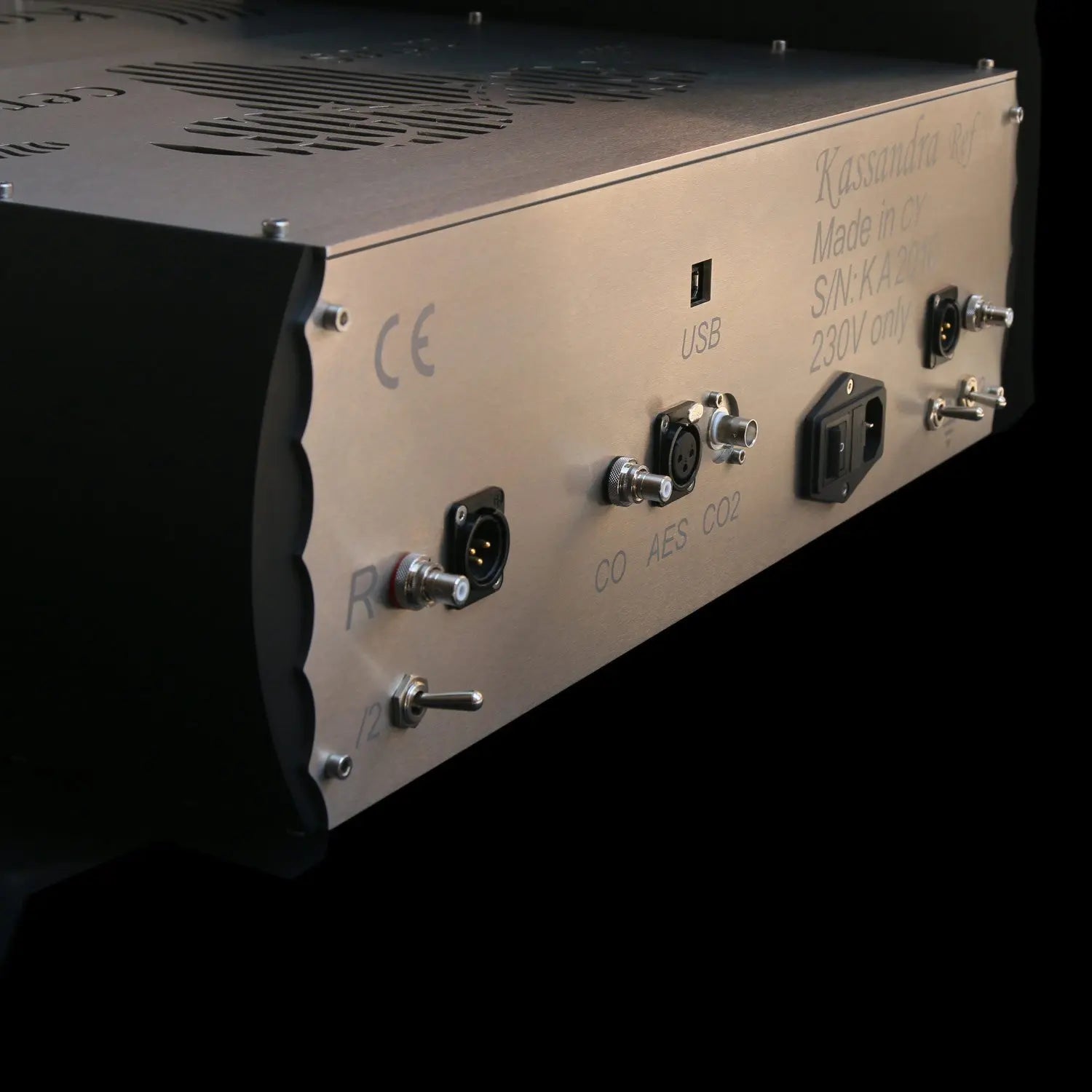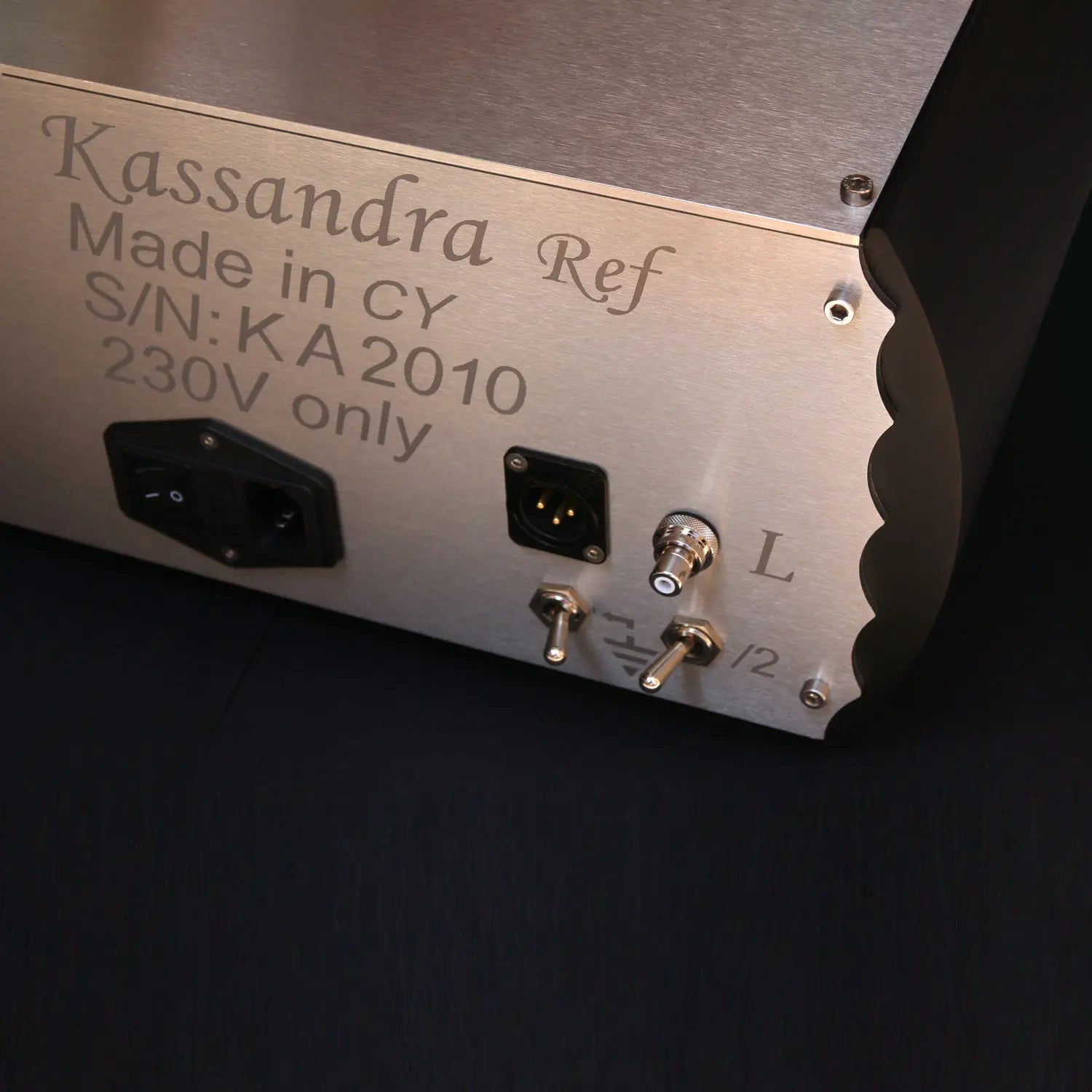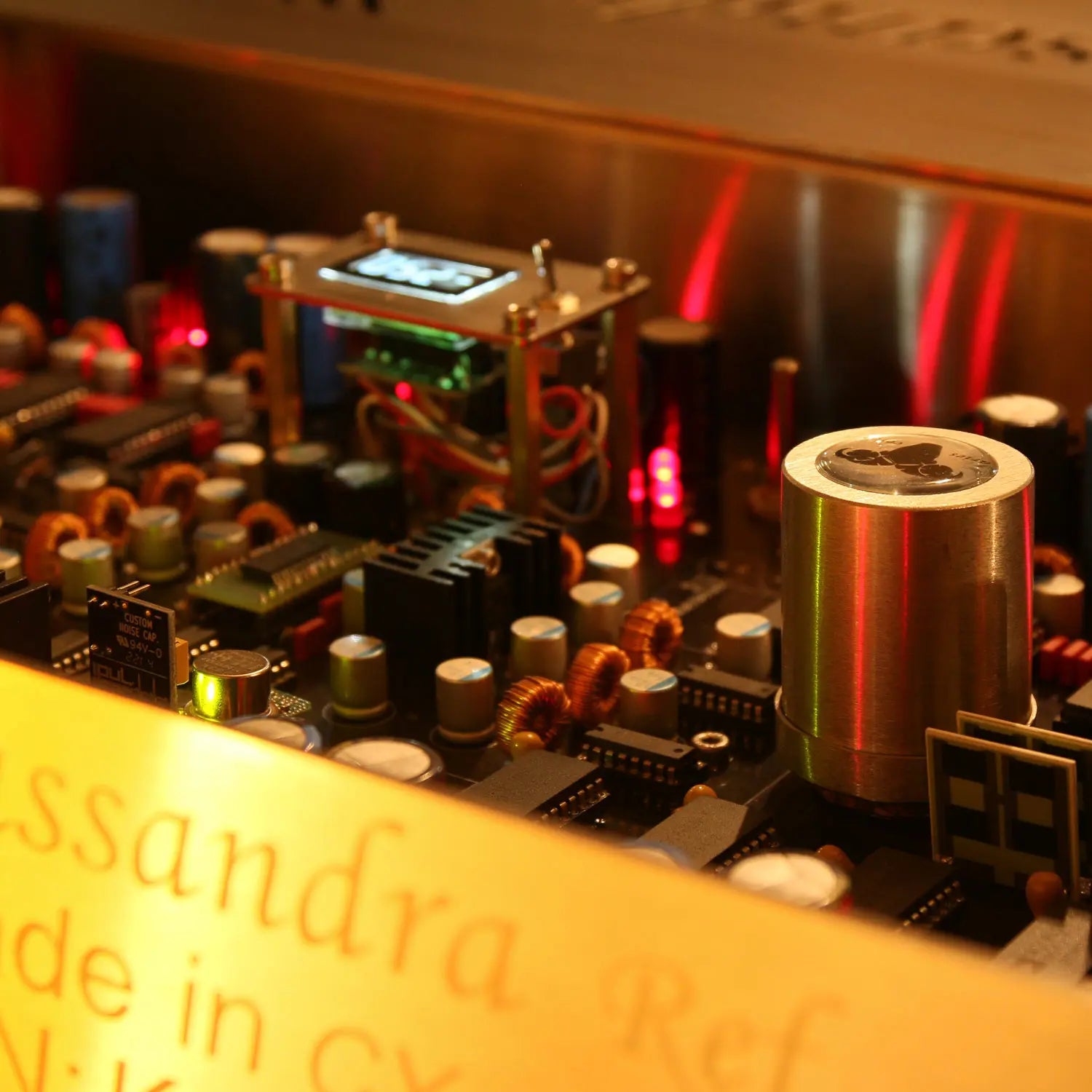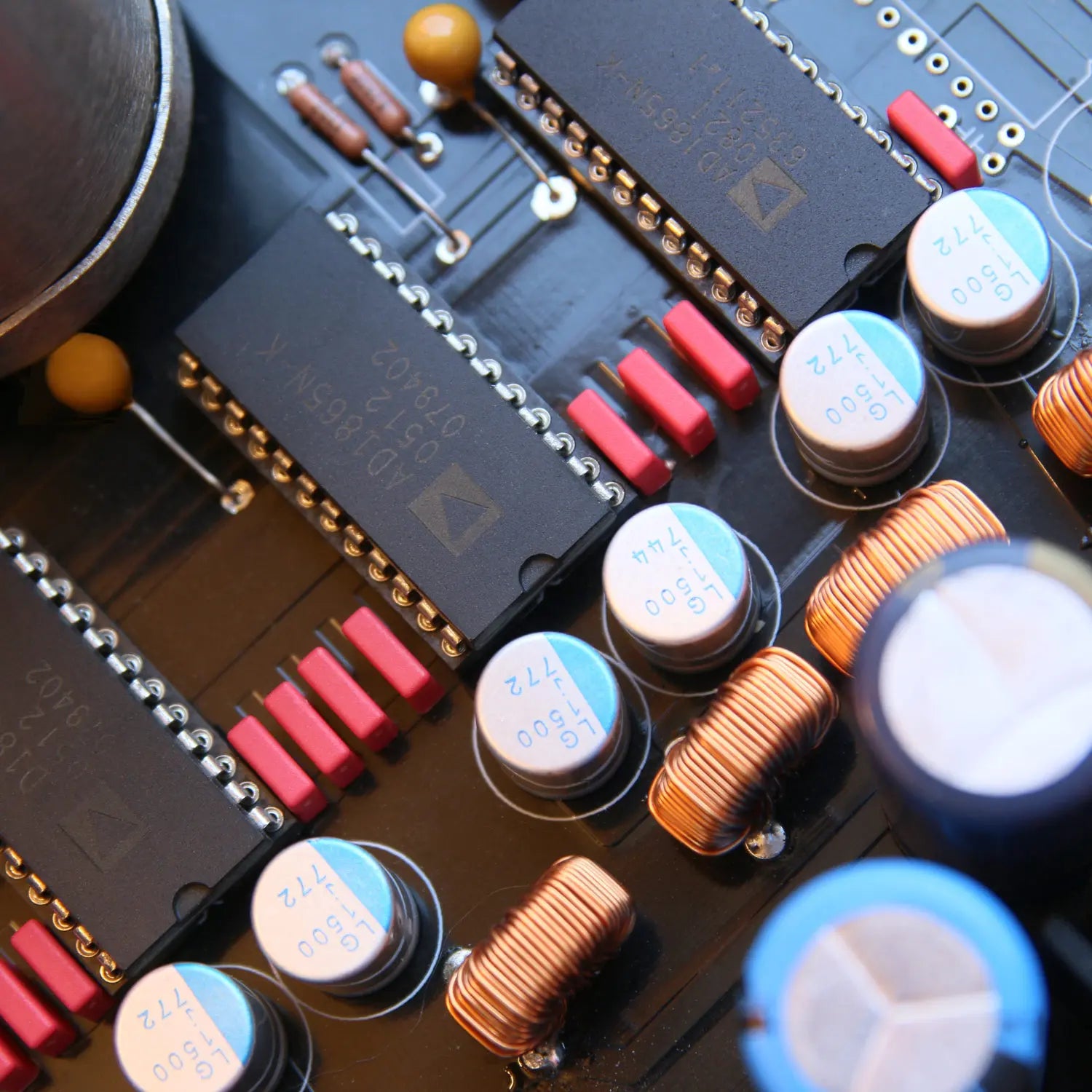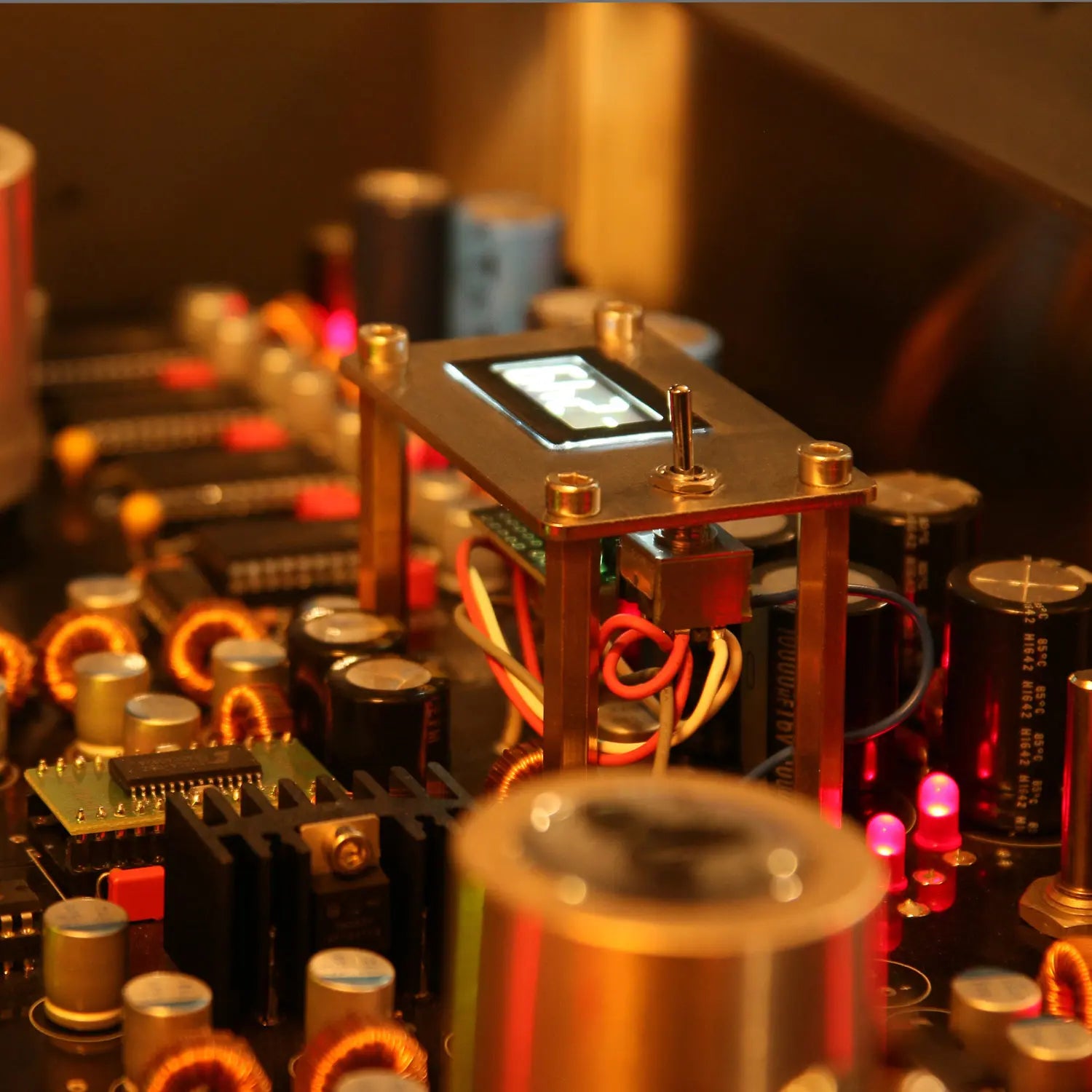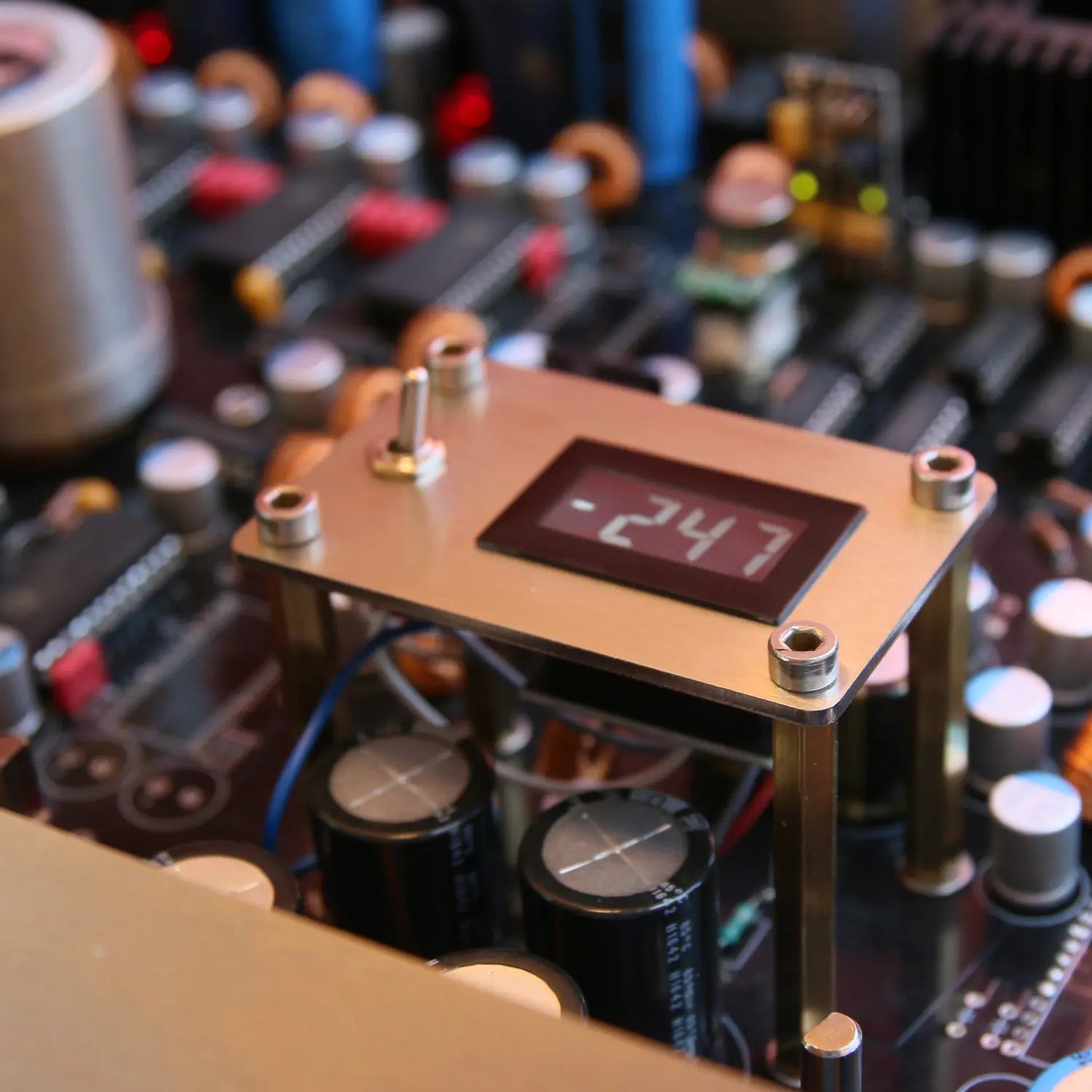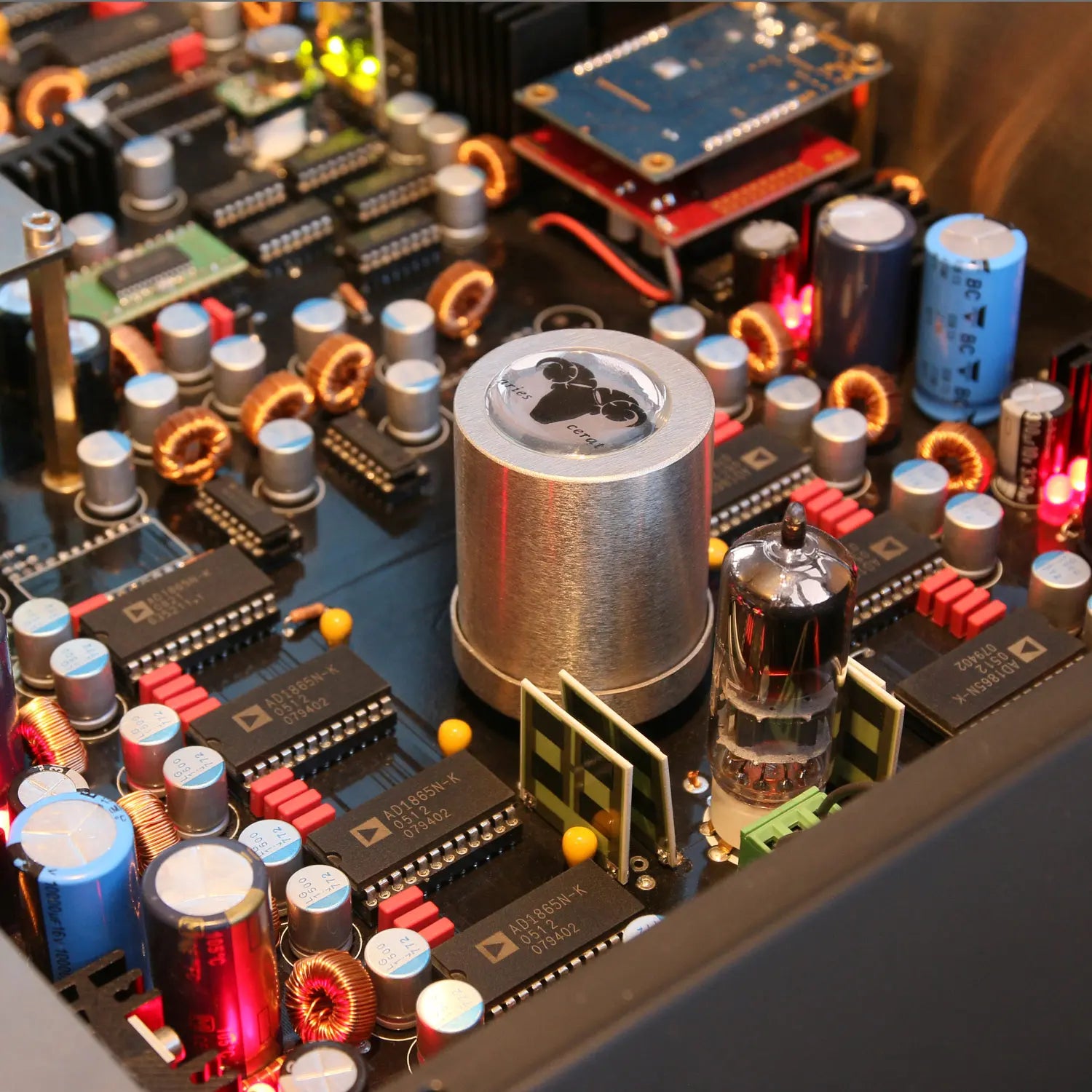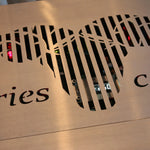
Please check delivery time. Usually it is 8-12 weeks, sometimes it is shorter.
“We believe the Kassandra DAC is currently one of the best audio sources available today and can only be matched by top analogue sources in timbre and musicality, but keeping well ahead in aspects of dynamic presentation and resolution. While in the process of setting up and building the company, at the earliest stages, the need of a true SOTA source was mandatory. You cannot claim to build speakers that aim to be the absolute best, top amplifier designs and so on, if you do not have a true reference source. So the Kassandra was born…”
DESIGNER
Our aim was to create a true analog source - one which takes ones and zeros as input...

Designing the Kassandra
Our approach in designing the Kassandra was to go back to the drawing board. Extensive testing and research proved to us that many of the DAC designs on the market had a certain character, lack of dynamics, lack of musicality and lack of true analog-like timbre and flow. In the process of development of our reference system, we were also searching for the best available converter. Yet no converter we tested delivered the sound we expected.
Delta-Sigma DAC and Multibit architecture didn’t deliver the required realism and analogue sound present in our other SOTA products. This quickly led us to the R2R Ladder DAC architecture for the Kassandra series, and the development of our AD1865N-K digital engine.
Ladder DAC
The Kassandra Ref II is a ladder DAC. Typically a ladder DAC uses a resistor network switched by a N number of switches, N being the bit depth. It is a passive sort of speak procedure with no manipulation of the incoming data stream.
It also has no digital filter, and completely avoids the negative sonic aspects created by fitting the common Delta-Sigma or Multibit architecture.
In the case of the Kassandra we choose to use an R2R IC – the classic Analogue Devices AD1865N-K, a much praised chip which we believe is the best sounding IC ever made. The AD1865N-K has a very straight forward data handling logic, and does not process the data stream in any way. This gave us the freedom to fully exploit the IC in our converter system.
The input data is latched and directly refreshes the resistor network, with absolutely no additional complex logic or data handling/processing. This way we have full control over the resistor network to use it as part of our converter system. Our Super Clock circuit directly re-clocks and drives the “refresh” signal, so absolutely no additional jitter is induced in the conversion.
There are no less than 16 R2R converters per channel in the Kassandra Ref II working as parallel switched resistor ladder converters, cancelling the deviation of resistor values down to Zero. Paralleling R2R converters improves linearity and noise figures are improved on the same principles, along with the dynamic range and channel separation. Sonic wise, paralleling converters elevate performance to another level in all aspects significant in high end audio.
Jitter
In the Kassandra Ref II we use many techniques regarding lowering and cancelling jitter, in both passive and active ways. Bouncing signals, overshoots, low rise times etc greatly increase jitter. We solve this by using special driving circuits and carefully tuned digital line terminations for all digital signals.
we use 35 LC filters implemented using RF chokes and high speed capacitors to decouple digital circuits and ICs from the power rails. These are extremely effective in cancelling out any form of PSU sourced jitter and solve this fairly complex problem. Jitter originated in USB and S/PDIF / Toslink sources are eliminated right at the “refresh” signal of the converters.
Having an IC that has no complex data handling logic and no multi stage data logic, the precisely timed signal resolves in a extremely accurate jitter free conversion. In our opinion, this is not possible with any other type of converter system.
The Super Clock is also used upstream for re-clocking the XMOS asynchronous USB controller, as well as the SPDIF receiver. With the internal clock, there is no need for a word clock input.
Jitter present at the word clock of the transport before S/PDIF transmission to the dac. Almost identical Jitter measurement was also present at the word clock using a USB transport.
Jitter distribution measurement of the word clock synchonising the 16 converters of the Kassandra DAC with the internal reclocker enabled, and using the same USB transport.
Jitter distribution after double reclocking of the word clock.
I/V Stage
The R2R ICs are current output devices. Their impedance is very high and close to an ideal current source. To drive the next stage in the Kassandra, the current must be converted to voltage. Avoiding using sonic degrading Opamps or a simple resistor, we use a specially designed transformer that converts the current differential to a single ended voltage output. The specially designed transformer is an ideal solution, and is second to none in direct comparison to the many alternative I/V methods available.
Gain Stage
Using technology from our world class tube amplifier and preamplifiers, the analog stage in the Kassandra Ref II is a small Single Ended tube amplifier. It is consists of a transformer loaded tube, driven directly by the I/V transformer, and biased with ultra low noise power supplies. The tube used is the best sounding tube from the super tube family of tubes – the E280F. It is triode connected and it’s specific parameters like transconductance, plate impedance and especially linearity and noise are levels above any other small signal tube.
The triode is loaded with a special quality large core step down transformer. The tube power supply is an oversized choke regulated supply, making sure that the tube is up to the task of following the converter’s flashing dynamics. Furthermore, the step-down transformer reduces the output impedance to 40 ohms, with a maximum swing @ full scale of 30V pp sine wave (10V rms).
GENUS INTEGRATED & KASSANDRA REF II
THE DEVELOPMENT OF THE KASSANDRA SERIES
Technical Specifications
|
DIGITAL SECTION |
|
|
IC Chip Array: |
16 R2R converters per channel, complimentary current output using the top grade Analogue Devices AD1865N-K with 8 converters per bank, 16 per channel |
|
Regulators: |
Eight discrete ultra-low-noise regulators for the 4 converter banks |
|
PSU: |
Over engineered power supplies, power input filters. |
|
Current to Voltage Conversion: |
Transformer I/V conversion with custom wideband transformers, balanced current to single ended voltage conversion. |
|
Additional Clock: |
Internal Super-Clock by-passable on the fly, triple regulated supply |
|
INPUT & OUTPUT SECTION |
|
|
PSU: |
Over engineered power supplies, power input filters, large toroid transformer & capicitor banks |
|
Gain Stage: |
Transformer loaded super tube output stage using the E280F tube. 5:1/10:1 step down transformer & double choke filtered supply |
|
Output Range: |
30Vpp output @ 0db 10Vrms (5Vrms on -6db setting) |
|
User Selectable Output: |
10v @50ohms or 5v @12ohms |
|
Output: |
2 x RCA, 2 x Balanced. True Balanced output standard. Floating RCA output switchable (ground loop resolver) |
|
Output Impedance: |
50 ohms (balanced and SE output), 12 ohms at -6db setting |
|
USB input: |
Data rates up to 24/384KHz |
|
Jitter attenuation: |
Down to femtosec level |
|
Dimensions: |
540mm W x 520mm D x 165mm H |
|
Weight: |
60kg |
- Choosing a selection results in a full page refresh.
